Roy Rene, known most prominently for his character of Mo McCackie, has been generally hailed as one of Australia’s best comic performers. Performing to sold-out shows across Australia during the 1910s and 1920s, and then hosting Australia’s most popular radio show in the 1940s, Rene has been called the first national Australian celebrity. Some of his popular catchphrases, such as ‘Don’t come the raw prawn with me’ and ‘You little beauty!’, have been immortalised in Australian slang. He is an especially interesting figure in Australian popular culture history, as he came to embody a sense of ‘Australianness’ as a Jewish performer, during a period of widespread anti-Semitic sentiment.
Early Life
Roy Rene was born on 15 September 1891 on Hindley Street. His father, Hyam (Henry) van der Sluys, was a Dutch-Jewish cigar-maker, and his Anglo-Jewish mother was named Amelia. There is some ambiguity over Rene’s legal and birth name; most sources list his intended name as Harry van der Sluys, but accept that his legal name instead became Harry Sluice. The fourth of seven children, Harry was raised with the intention of becoming a jockey, as his family was highly interested in the sport of horse-racing. His career on the track has been summarised simply as a ‘disappointing debut’, in which at the age of eight he was repeatedly thrown from the back of a horse. He thus concluded that he was incapable of effective riding.
His first forays into theatrical performance followed swiftly, however. At the age of ten, he won a singing competition in an Adelaide market. His first actual performance was in 1905, at thirteen years old, as a singing and dancing extra in the blackface pantomime Sinbad the Sailor at the Theatre Royal on Hindley Street. Shortly after this debut, Harry and his family moved to Melbourne, where he made his professional debut as a solo performer. Dubbed ‘Boy Roy the Singing Soprano’, his initial career was not especially promising. In 1908, against the wishes of his father, who still wished for him to become a jockey, Harry signed onto a vaudeville production in Melbourne. He soon moved to Sydney, having reinvented himself as ‘Roy Rene’ by 1910, taking the name from an apparently famous French clown.
In 1912, Rene started to do his first impressions of stereotypical ‘Jewishness’, imitating a popular American Jewish comedian. This went over very well with audiences, and he was offered a touring position in a trip to New Zealand. He was well-received, and played for the major New Zealand cities for about a year. Upon returning to Australia, Rene had a coincidental and decisive meeting with important variety entrepreneur Harry Clay on a Sydney street. Clay’s act for the night had just cancelled, and he offered the role instead to Rene. The reception was so positive that Clay immediately offered Rene a position on his Sydney circuit. After playing for Sydney’s suburbs and touring rural New South Wales, Rene finally hit true stardom in 1916 when he partnered with comedian Nat Phillips.
‘Stiffy and Mo’, Vaudeville and the Cinema
Roy Rene’s mainstream success came with the partnership of ‘Stiffy and Mo’. Nat Philips adopted the character of Stiffy, while Rene became Mo. This particular character gained such traction that even his obituary in The Age (Melbourne) named him as ‘Roy (Mo) Rene’. While popular accounts of their partnership have credited Mo as the comic foil to Stiffy’s straight man, recent investigations have shown that this dichotomy has been exaggerated. Both men performed both of these roles at various times, and were similarly hailed during their career together. A major part of this misconception is that Rene went on to have a much more successful career post-‘Stiffy and Mo’, as well as writing a somewhat self-congratulating autobiography in which the comic talents of Philips were arguably downplayed. It has also been suggested that this perception came about as a result of the final year of the partnership, in which Philips had become increasingly tired of what he saw as retreading the same material.
The duo of Stiffy and Mo almost completely dominated popular culture of the Australian revusical era, seen as 1915-1930. A revusical was a revue, a single act comedic variety performance, with significant musical elements, and was the dominant form of show during this time. The Stiffy and Mo revusicals were written and directed by Philips, and were generally titled according to the professions the two titular characters happened to occupy this particular day. Examples include ‘Stiffy and Mo as Plumbers’, ‘Stiffy and Mo as Soldiers’, ‘Stiffy and Mo as Waiters’, and even ‘Stiffy and Mo as Surfers’.
The costumes of the two characters changed little across this period. Mo wore ‘a singlet, an old pair of pants, a waistcoat, boots and anybody’s hat’, while Stiffy wore ‘a South Sydney Guernsey, an ancient pair of pants, an old vest and out-sized boots’. After claiming that these clothes were not worth ‘five bob’, Rene jokingly insisted that they were insured for ‘at least several hundred quid’.
By 1925, after nine years touring together, the duo split up. There has been some debate over the nature of this split, regarding its reasons and its level of hostility. Some have argued there was a significant breakdown due to incompatible personalities. Evidence for this is supposedly due to the manner in which Philips would become frustrated by Rene’s laissez-faire approach to planning and organisation, and a penchant for playing practical jokes. The dominant historical perspective today, however, is that it was simply due to the two men, having lived and worked in close proximity for almost a decade, wanting to pursue separate paths.
After the split, both men continued their careers in comedy, to mixed success. Rene returned to vaudeville with a new show with a new partner, Fred Bluett, imaginatively titled ‘Bluett and Mo’. While neither’s new ventures failed, they were unable to capture the public’s enthusiasm in the same manner as had Stiffy and Mo. This can be seen in the fact that their reunion tour of 1927-1928 sold out all its shows. Yet, after this brief period, Stiffy and Mo split again, this time for good. Philips had become tired of his Stiffy character, while Rene was dedicated to continuing his life as Mo.
In 1934, Rene starred in Strike Me Lucky!, his first and only venture into cinema. It told the tale of Mo as a clumsy man down on his luck, somehow stumbling through high society. The film was a failure at the box office, even though it starred Rene’s wildly popular character. Critics have surmised that without an audience to react to and communicate with, Rene’s performance lacked the special exuberance that live audiences around Australia had loved.
With his transition to film halted, Rene returned to the theatre, and continued to play to packed houses for the next decade. However, in 1945, at the conclusion of the Second World War, his contract was abruptly terminated, and his career took a decisive shift.
‘McCackie Mansions’ and Radio Broadcasting
Shortly after his retirement from stage performance, Rene was offered a radio broadcasting contract. Colgate-Palmolive sponsored a radio station, based in Sydney and syndicated nationally, that sought to advertise their products while also broadcasting comedic entertainment. In 1946, Rene was offered a place hosting Calling the Stars, the most popular variety show on Australian radio. He was an immediate hit in this format, which involved recording in front of a live audience, and soon used the show for a new series of sketch comedy called ‘McCackie Mansions’. There was some level of continuity with his previous performances, as the live audience meant that the recordings were done in full costume. Running from 1947 to 1949, and syndicated frequently through the 1950s, the show apparently became the most popular twelve minutes of radio in Australian history. ‘Respectable’ Australians, who would have previously baulked at attending the ribald live theatrical performances, often found that they were able to enjoy Rene’s radio work. As a result, Rene’s work received its greatest ever audience; listener statistics indicate that up to 2.5 million Australians, out of a national population of only 8 million, tuned in regularly.
In this show, the character of Mo, previously free to engage in any number of bizarre situations and adventures, was placed within the continued context of a family home. Mo lived with his son Young Harry, with whom he had something of a tempestuous relationship. The phrase ‘Cop this, Young Harry!’, exclaimed by Mo while assaulting his son in a slapstick manner, become a very popular saying in Australian slang of the time. The show also involved Mo’s relationship with his neighbour ‘Horrible Herbie’ and the effeminate and smelly ‘Spencer the Garbage Man’.
Later Life and Legacy
In the early 1950s, shortly after the conclusion of ‘McCackie Mansions’, Rene’s health took a downward turn. After a heart attack, he retired from radio. His heart concerns continued, and he soon died in 1954. His death was heralded as a national tragedy, and the funeral in Sydney involved over one thousand attendees.
He has since been heralded as one of Australia’s most talented and beloved comic performers. Even though he was completely unknown to popular audiences outside Australia, he was highly praised by prominent foreign actors and comedians. Dame Sybil Thorndike, an acclaimed British Shakespearean performer, and Jack Benny, an American pioneer of vaudeville and comedy radio, were said to have placed Rene at the same level of comedic genius as Charlie Chaplin.
In 1975, New South Wales launched an awards event to support the live entertainment industry, called the Australian Star Awards. After its initial success, the awards night was expanded to encompass the entirety of Australia, and renamed the Mo Awards. Since 1976, the Mo Awards have been an annual staple of Australian theatre and performance arts. The trophy is a statuette in the shape of Roy Rene as Mo McCackie.
In 2010, a bronze statue of Rene as Mo was unveiled on Hindley Street, the location of his birth. This statue was commissioned by the Adelaide City Council as part of its Public Art Program, to celebrate Rene’s contribution to Australian artistic entertainment.




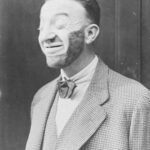
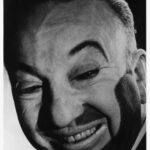
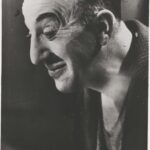
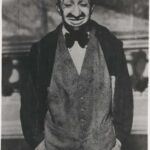
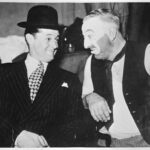

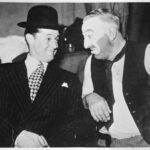

Comments
2 responses to “Roy ‘Mo’ Rene”
I remember my father talking about Roy Rene when he appeared as Mo in Stiffy and Mo. Apparently Mo would introduce “he’s Stiffy and he’s got a Mo” and I’m Mo and I’ve got a …..” Apparently it brought the house down every time
Another story from my father. During WW2 Roy Rene and co would drum up business for the evenings’ show as follows. They would sit in a bar opposite the Tiv and talk loudly about how they’d seen the show last night and it was so filthy it was nearly closed down. A successful ploy I’m told